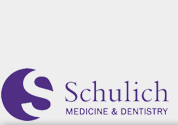Case Synopsis
This case presents a dilemma that can happen to anyone with an intervention to offer, which they are confident would alleviate a problem they believe is worth addressing. Many public health professionals will find themselves in one of two positions. The first, a position of believing so much in a proposal but not sure of how to make it go through. The second, a position of a decision maker who would be faced with more than one needed, effective, feasible, and sustainable proposal but could implement one or a few due to limited resources.
The case is meant to shed light on both situations with more focus on Dr. Hodge’s position, wanting to advocate for a teleophthalmology screening program. Through introduction of this situation the case presents vision care status in Canada, economic evaluation concepts, costeffectiveness analysis, and health care decision-making.
This case would be suitable for use in a health economics course, to provide real life situations that facilitate understanding of its dominant theoretical content. Health economics is an essential aspect of decision making that can be utilized in most public health career positions. At one point or another money will be scarce and the ability to understand costs in relation to public health will be a necessary skill.
Case Objectives
- To learn that there are different types of economic evaluations, with various measuring units.
- To understand the role of economic evaluation in health care decision-making.
- To learn about cost-effectiveness analysis in relation to public health.
- To have a basic understanding of key concepts of economic evaluations such as QALYs, ICER, and threshold of ICER in the economic context.
Case Study Questions
- In this case, a review of economic evaluations of teleophthalmology screening is recommended to support implementation of a new intervention by proving that it maximizes the benefits from healthcare spending. What are some other uses of economic evaluations in health care decision making?
- In this case, cost-effectiveness was a factor, which Dr. Hodge addressed to support his proposal. What other factors would decision makers have to examine before funding a proposal?
- Who else may benefit from the systematic review Dr. Hodge plans to undertake?
- Would a different approach altogether be more effective in supporting his proposal?
Keywords
healthcare decision making, systematic reviews, health economics, economic evaluations, cost-effectiveness analysis, ICER
ISBN
978-0-7714-3121-0
Recommended Citation
Bahnacy, F., Hodge, W., Speechley, M. (2016). Teleophthalmology Screening: Economic Evaluations in Health Care Decision Making. in: Terry, A.L. & John-Baptiste, A. [eds] Western Public Health Casebook 2016. London, ON: Public Health Casebook Publishing.


